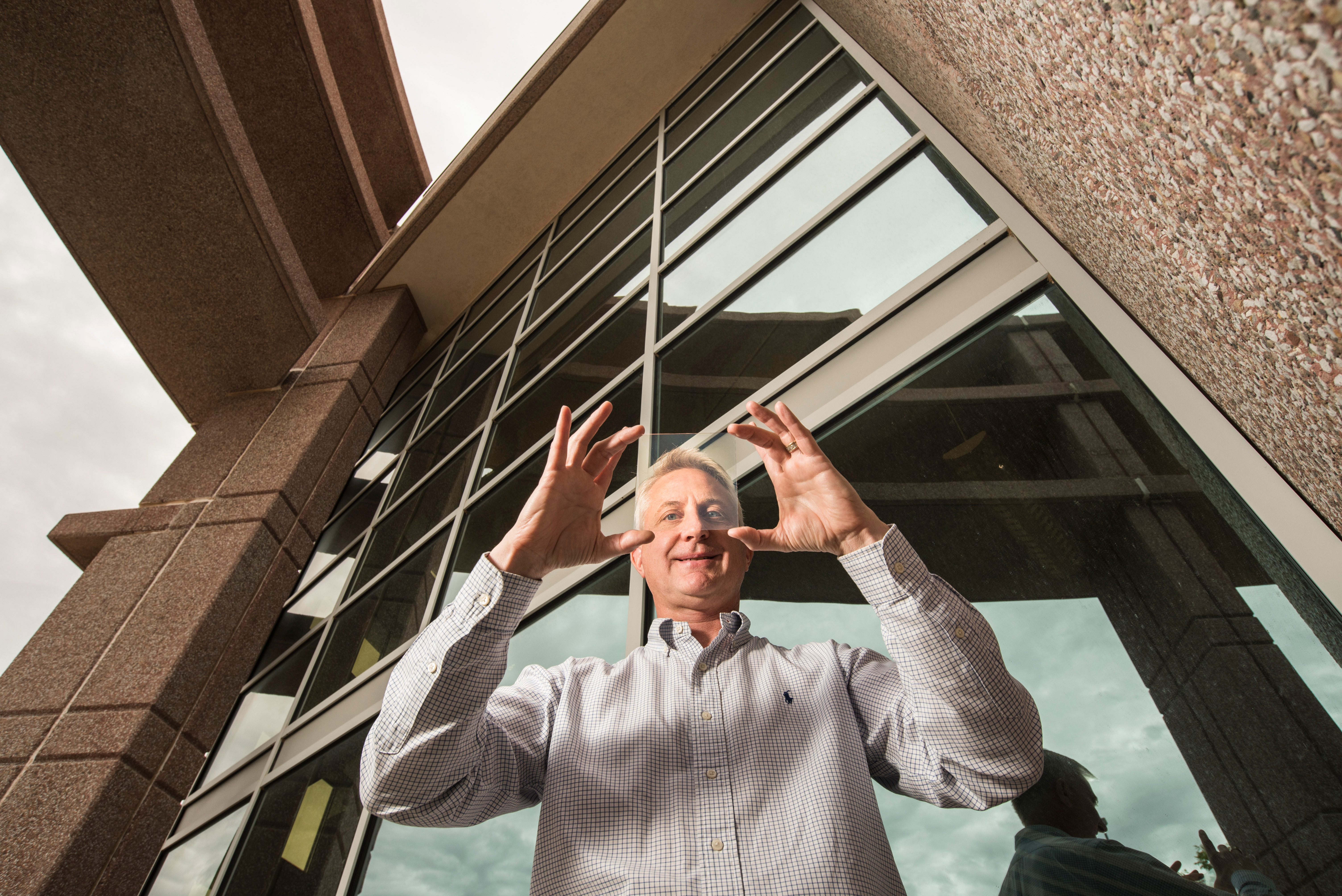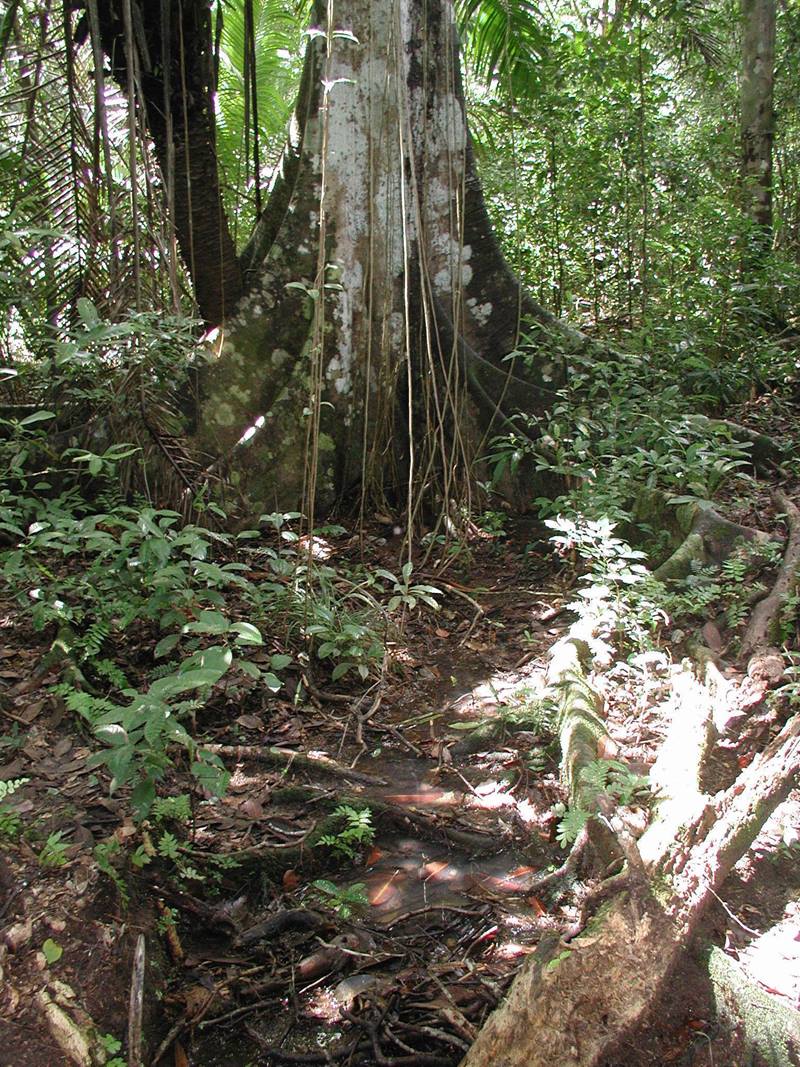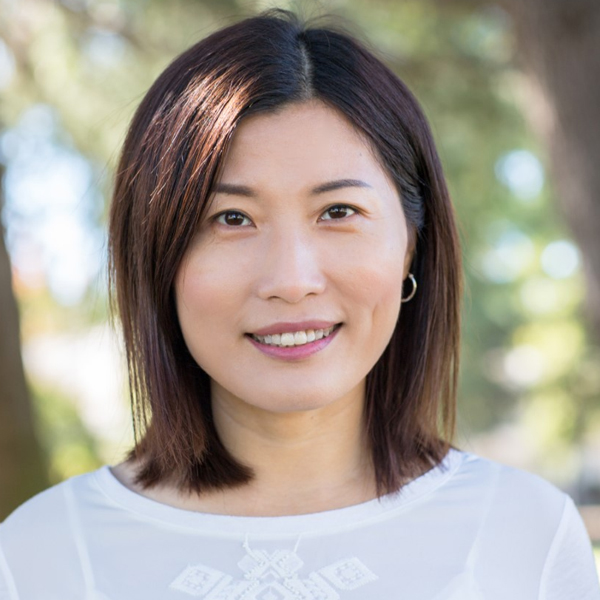Alabama patients now have increased access to safe, affordable care with the signing today of HB 268 by Governor Kay Ivey. The law provides that, in addition to physicians and dentists, Certified Registered Nurse Anesthetists (CRNAs) may provide anesthesia care under the direction of or in coordination with a physician, podiatrist, or dentist.
Month: April 2022
UF/IFAS scientists record first case of harmful bacteria in ubiquitous weed found throughout U.S.
Scientists at the University of Florida Institute of Food and Agricultural Sciences (UF/IFAS) have recorded the first North American case of a harmful phytoplasma disease known for its threat to fruit, vegetable and ornamental crops in South America and the Middle East. These same crops are economically important to Florida and in parts of the U.S. To make matters worse, scientists confirmed the host for the disease to be one of the most noxious and rapidly spreading weeds commonly found in a wide range of environments throughout the United States and into Canada.
AF2Complex: Researchers Leverage Deep Learning to Predict Physical Interactions of Protein Complexes
Proteins are the molecular machinery that makes life possible, and researchers have long been interested in a key trait of protein function: their three-dimensional structure. A new study by Georgia Tech and Oak Ridge National Laboratory details a computational tool able to predict the structure protein complexes – and lends new insights into the biomolecular mechanisms of their function.
Chula X UNESCO Futures Literacy Week 2022
Chulalongkorn University and the Thai National Commission for UNESCO organized the International Online Conference Chula Futures Literacy Week on “Connecting Communities through Futures Literacy: Solidarity and Transformative Learning in a Post-Covid-19 Asia”
Researchers detect a tropical plant species presumed to be extinct
University of Miami associate professor Kenneth Feeley and graduate student Riley Fortier were part of a research group that rediscovered a plant called Gasteranthus extinctus, named to anticipate its extinction.
Extract from a common kitchen spice could be key to greener, more efficient fuel cells
Turmeric, a spice found in most kitchens, has an extract that could lead to safer, more efficient fuel cells. Researchers at the Clemson Nanomaterials Institute and their collaborators from the Sri Sathya Sai Institute of Higher Learning in India discovered a novel way to combine curcumin and gold nanoparticles to create an electrode that requires 100 times less energy to efficiently converts ethanol into electricity.
Filling in the Gaps
With all that the Land of Enchantment has to offer, skin cancer isn’t on the top on anyone’s list. But abundant sunshine and a dearth of dermatologists in the state pose a challenge for detecting and treating the various forms of skin cancer. Skin Cancer Screening clinics are now resuming. The first of several new clinics will be held in Albuquerque on Saturday, May 7. More are planned over the coming year in Gallup, Taos and southern New Mexico.
Some children with cerebral palsy scoliosis may not need pelvic fixation, study shows
A new study finds that some children with cerebral palsy scoliosis do not require pelvic fixation when undergoing growing rod treatment. Researchers say if the pelvic tilt and lower lumbar spine tilt are small enough, screws may not need to be inserted into the pelvis to anchor growing rods, potentially avoiding several complications.
On a mission: U-M orthopaedic surgeons look to expand program abroad
Each year, a team from University of Michigan Health’s Department of Orthopaedic Surgery travel to the Dominican Republic for a medical mission, where the operate on local patients at an under-resourced hospital. Ahead of another mission, leaders are looking to grow the program by adding more trips and resources, as well as partnering with more institutions.
Half of parents regularly give kids a dietary supplement
Most parents have given their child dietary supplements, a new national poll suggests.
Body’s Response to Different Strains of Tuberculosis Could Affect Transmission
Two strains of the bacterium causing tuberculosis have only minor genetic differences but attack the lungs in completely different fashion, according to Rutgers researchers.
FSU expert available to comment on environmental messaging ahead of Earth Day
TALLAHASSEE, Fla. — On April 22, people around the globe observe Earth Day, an opportunity to practice gratitude for the life-giving bounty of the planet and to recognize efforts to protect the environment. Since its origins in 1970, the…
Study finds college becomes cheaper for some students, despite rising tuition at public universities
While tuition at public universities across the nation has risen dramatically in recent years, increases in financial aid have kept pace to keep college more affordable for students from lower-income families, according to a new Tulane University study.

Machine Learning Helps Predict Protein Functions
To engineer proteins for specific functions, scientists change a protein sequence and experimentally test how that change alters its function. Because there are too many possible amino acid sequence changes to test them all in the laboratory, researchers build computational models that predict protein function based on amino acid sequences. Scientists have now combined multiple machine learning approaches for building a simple predictive model that often works better than established, complex methods.

Cheers to five more years
An initiative that helps businesses transform New Mexico national laboratories’ technologies into viable products and services will continue driving innovations to market into 2027.
New IAFNS Review on Sodium Reduction Strategies Builds on Hundreds of Studies
New scoping review responds to health concerns about sodium intake by documenting effective solutions for products that are acceptable to consumers.
Changes in vegetation shaped global temperatures over last 10,000 years
Follow the pollen. Warmer temperatures brought plants — and then came even warmer temperatures, according to new model simulations published April 15 in Science Advances.
Nationwide maps of bird species can help protect biodiversity
New, highly detailed and rigorous maps of bird biodiversity could help protect rare or threatened species. Researchers at the University of Wisconsin–Madison developed the maps at a fine-enough resolution to help conservation managers focus their efforts where they are most likely to help birds — in individual counties or forests, rather than across whole states or regions.
FSU expert available for context on early climate change research
By: Bill Wellock | Published: April 15, 2022 | 11:02 am | SHARE: Earth Day marks a time to consider the environmental challenges facing humanity, including our changing climate. Through the efforts of scientists around the planet, the understanding of those changes is constantly being refined.A wealth of our knowledge about how the climate works is due to the interest of the U.
International OK shapes public perceptions of drone warfare
Armed drone strikes earn more public support and legitimacy when they have international approval from organizations such as the United Nations, according to a survey conducted by a team of Cornell researchers.
Gov. Ivey’s ‘stolen election’ claim in a campaign ad is still unfounded
In a reelection campaign ad, Alabama Gov. Kay Ivey, claimed without proof, that the 2020 election was stolen from Donald Trump. There is still no evidence of election fraud.
Registration now open for EMBO Lab Leadership Course at Stowers Institute
This course provides tools, techniques and insight tailored specifically to the laboratory/research setting.
Drug reduced frequency of breathing pauses in sleep apnea
A new University of Gothenburg study has paved the way for the first drug treatment for sleep apnea. Compared to before receiving the treatment, breathing pauses decreased with on average more than 20 per hour for patients given the drug.
Many Physicians Have Misconceptions About E-Cigarettes
Many physicians incorrectly believe all tobacco products are equally harmful and thus are less likely to recommend e-cigarettes for people seeking to quit smoking or those being treated for a tobacco-caused disease, according to a Rutgers study.
What drives racial and ethnic gaps in Medicare’s quality program?
The improvements in care for older adults from the Accountable Care Organization movement haven’t reached all older Americans equally. ACOs that include a higher percentage of patients who are Black, Hispanic, Native American or Asian have lagged behind those with higher percentage of white patients in providing preventive care and keeping patients out of the hospital. Now, a new study shows that some of this inequity stems from how an ACO’s patients get their primary care.
Brazilian study finds COVID-19 cases and deaths higher in areas with electoral support for President Bolsonaro
Study of 853 counties in Minas Gerais state finds counties that voted for Brazilian President Jair Bolsonaro in the 2018 election are more likely to have higher incidence and death rates from COVID-19
International collaboration compares geologic repository assessment tools
Researchers from Sandia National Laboratories and partner U.S. national laboratories will compare their Geologic Disposal Safety Assessment software framework to the safety assessment software of international peers at a late-April workshop.The Sandia-led Geologic Disposal Safety Assessment framework is a computer modeling system designed to answer critical safety assessment questions about future disposal options for spent nuclear fuel deep underground and the system of tunnels, containers and possible concrete-like barriers used to keep the radioactive material contained far from the surface and water sources, said Emily Stein, a Sandia manager overseeing the development of the framework.
Decoding a direct dialog between the gut microbiota and the brain
Gut microbiota by-products circulate in the bloodstream, regulating host physiological processes including immunity, metabolism and brain functions.
Urgent action required to protect world’s coral reefs from disappearing within three decades, warn experts
An international team of environmental scientists have published a series of significant recommendations to protect, conserve and study the world’s coral reefs – the ‘canaries in the coal mine’ of climate change.
Lost South American wildflower named “extinctus” rediscovered (but still endangered)
Scientific names get chosen for lots of reasons– they can honor an important person, or hint at what an organism looks like or where it’s from. For a tropical wildflower first described by scientists in 2000, the scientific name “extinctus” was a warning.
Rilzabrutinib for blood disorder shows promise in phase 1–2 clinical trial
Drug may safely boost platelet levels in patients with immune thrombocytopenia.
Socioeconomic factors affect response to depression treatment
Cross-college collaboration highlights importance of patients’ home environments.
Vax now or vax later – what do parents think of mandatory vaccination?
New research from the Institute of Psychiatry, Psychology & Neuroscience (IoPPN) at King’s College London has assessed parental preference for a mandatory childhood vaccination scheme and finds that, when rating different options for a mandatory vaccination scheme, the incentives for vaccinating, and penalties for not vaccinating, were the most influential factors in parents’ decisions.
Newly Elected Division Councilors Named for CUR’s 2022-2023 General Council
The Council on Undergraduate Research (CUR) congratulates the 75 new and or re-elected division councilors to the General Council for a three-year term starting on July 1, 2022.
George Mason University’s Bethany Usher Elected as 2023-2024 CUR President
Dr. Bethany Usher, Associate Provost for Undergraduate Education at George Mason University in Fairfax, Virginia, has been elected to serve as president of the Council on Undergraduate Research (CUR). Usher will become president-elect on July 1, 2022, taking a seat on CUR’s Executive Board, and succeeding 2022-2023 CUR president Ruth Palmer (emeritus College of New Jersey) in the summer of 2023.
Newly Elected Representatives to CUR’s 2022-2023 Executive Board
Beth A. Cunningham, PhD (American Association of Physics Teachers), Maria Iacullo-Bird, PhD (Pace University), and Charlotte K. Simmons, PhD (University of Central Oklahoma), have been re-elected to serve as council representatives on the Council on Undergraduate Research’s (CUR) executive board.

Quantum Information Science Initiative Bridges Fundamental Discoveries to Future Technologies
Research happening now within the Office of Science is critical to competing in the quantum-based technologies of the future.
Hubble Sheds Light on Origins of Supermassive Black Holes
Bizarre, Evolutionary Missing Link Uncovered in Hubble Deep Survey of Galaxies
Hubble Confirms Largest Comet Nucleus Ever Seen
4-Billion-Year-Old Relic From The Early Solar System Is Headed This Way

Predicting Methane Dynamics during Drought Recovery
A new model predicts small-scale differences in methane emissions from tropical soils on a hillside during drought and recovery.

Yongqin Jiao: Then and Now / 2011 Early Career Award Winner
Yongqin Jiao investigated how the bacterium Caulobacter crescentus survives in high levels of uranium and its potential use for bioremediation.
NK cells combined with bispecific antibody showed strong response for patients with lymphoma
Researchers from The University of Texas MD Anderson Cancer Center showed that natural killer (NK) cells derived from donated umbilical cord blood, combined with a novel bispecific antibody known as AFM13 that targets CD16A and CD30, achieved effective responses in patients with pretreated and refractory CD30+ lymphoma. The study was presented today at the American Association for Cancer Research (AACR) Annual Meeting 2022.
“Lungs in a Box” Now Offered at Northwestern Medicine
Due to COVID-19 and a rapidly expanding list of conditions for which lung transplantation can be lifesaving, the need for new organs is growing. However, there’s a global shortage of donated lungs, which results in numerous deaths among patients on the waitlist. To help expand the donor pool, Northwestern Medicine is now using a device from XVIVO called XPS™ which is used for ex vivo lung perfusion (EVLP) – nicknamed “lungs in a box” – to rescue potentially viable lungs and those initially deemed “unacceptable” for transplant. Out of all solid organs, lungs have the lowest utilization, with only one in five donated lungs getting transplanted.
Melting ice caps may not shut down ocean current
Most simulations of our climate’s future may be overly sensitive to Arctic ice melt as a cause of abrupt changes in ocean circulation, according to new research led by scientists at the University of Wisconsin–Madison. Climate scientists count the Atlantic Meridional Overturning Circulation (or AMOC) among the biggest tipping points on the way to a planetary climate disaster.
Baseball legend, AI pioneer, Marine Corps commandant and comedian/actor to be honored at Tulane Commencement
Four individuals who have made major contributions in fields ranging from sports and entertainment to national defense and artificial intelligence will receive honorary degrees at Tulane University’s 2022 Commencement.
Henry “Hank” Aaron, one of baseball’s greatest players; Gen. David H. Berger, a Tulane graduate and commandant of the United States Marine Corps; Ken Jeong, a medical doctor who became one of the country’s most sought-after comedic actors and Dr. Rosalind Picard, an inventor, engineer, scientist and pioneer in artificial intelligence, will receive honorary degrees at the May 21 ceremony. Aaron will receive Tulane’s first-ever posthumous honorary degree.
Simple changes in care reduced heart exposure during lung cancer radiation treatment
A team at the University of Michigan Health Rogel Cancer Center, in partnership with the statewide Michigan Radiation Oncology Quality Consortium (MROQC) lung cancer collaborative, found that raising awareness about the risk of radiation exposure to the heart and standardizing cardiac exposure limits reduced the average dose to the heart by 15% and reduced the number of patients receiving the highest heart doses by half without minimizing tumor treatment or increasing dosage to other at-risk organs in the chest
STUDY FINDS DECREASE IN RACIAL DISPARITY AND INCREASE IN SURVIVAL RATES IN METASTATIC BREAST CANCER PATIENTS DUE TO MEDICAID EXPANSION
Findings from Study Led by Susan G. Komen Scholars Published in JAMA Oncology
Tacking the Mesh: It’s the Anatomy That Matters!
In a study published in the May 2022 issue of Diseases of the Colon & Rectum, investigators from the Medical University of Vienna, Austria, provide insight in the anatomical position of the mesh in relation to the sacrum during a laparoscopic procedure. They studied 18 fresh cadavers and performed laparoscopic sacral mesh fixation as surgeons would do during laparoscopic ventral mesh rectopexy.
Is Multidisciplinary Team Management for Polyps the Way to Go?
The aim of this study was to analyze decision-making strategies and proportion of patients who had organ preservation and secondary treatment after 2 years of implementation of a dedicated significant polyp and early colorectal cancer multidisciplinary team. A secondary aim was to assess the recurrence rate at 2 years.
Senate Introduces Bill to Provide Full Chiropractic Coverage in Medicare
The U.S. Senate has introduced a bill, S. 4042, to modernize Medicare coverage and better meet the needs of today’s seniors by increasing access to services provided by doctors of chiropractic.